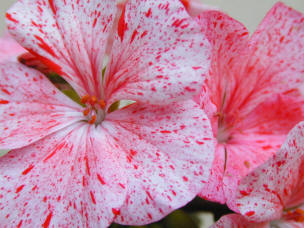Tall Flowers for the Garden. Plants with Spikes of blooms
The
scope of this section about tall flowering plants includes those
that either have tall flower spikes rising above non-intrusive
foliage, or those that have flowers atop slender erect stems.
For the most part, shrubs will be excluded – having a section of
their own – together with perennial plants that have substantial
foliage where the flowers are not held considerable aloof of the
leaf canopy. We talk of tall flowers rather than big plants!
Our tall flowering plants are generally
those which have either erect flower spikes or at least tell stems
with a wealth of flowers at the top. The other criteria, is that the
flower or flower stems will stand aloof of their foliage which is
normally unobtrusive and does not detract from the main thrust of
plants with tall flowers.
Two typical examples of those being the
flower spikes of Lupins, which are most certainly held aloft of the
basal foliage cluster, and the cloud-like floral display of the
magnificent Verbena bonariensis, with its ground level foliage cluster
- which is generally of no visual significance – tall erect stems and
masses of flowers at the top.
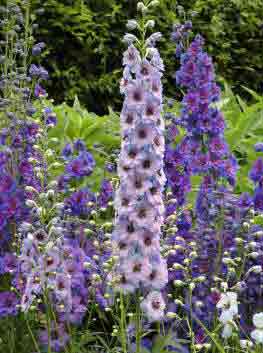 Plants with tall spikes of flowers.
Plants with tall spikes of flowers.
My best twelve, but tomorrow it could well be different choices. Such a wide scope depending upon what you want to achieve in your garden or border layout.
It is not feasible to arrange in height order, as some – such as the Verbascum group – contain plants which can range from 2ft (60cm) to 8ft (2.5m) in height.
Delphiniums also, are variable between heights of 3ft (1m) and 6ft (2m).
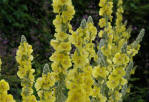 Verbascum – Mullein.
Verbascum – Mullein.
Height can vary between types. For
instance the Verbascum olympicum can grow to height of 2m plus, with a
dense rosette of attractive silver white foliage at ground level to
Verbascum chaixii – the nettle leaved mullein) that grows to around 1m
tall. (Biennial or perennial types)
 Alcea
– Hollyhock.
Alcea
– Hollyhock.
The sky’s the limit (almost) for the famed and
loved Hollyhock.
This Tall flowering plant has erect stems of
varied colours including white, yellow, pinks and deepest red. Single
or double flowers.
(Biennial or short lived perennial)
 Delphiniums
Delphiniums
The Elatum group of Delphiniums have the tallest flower spikes.
The spires of blue flowers are legendry, often to 2m (6ft) tall
with unobtrusive but attractive – foliage at the base. (Hardy
perennial)
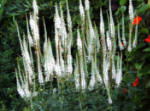 Veronicastrum – Culver’s Root Flower
Veronicastrum – Culver’s Root Flower
The first time I came
across this choice, was in a woodland garden – a dapple shaded
opening.
It was standing 6ft tall (2m) and a dazzling sets of pure
white spires. It can also have pink or light purple blooms.
(Perennial)
 Digitalis
– Foxgloves
Digitalis
– Foxgloves
The common Foxglove is the most widely planted of
the Digitalis, but there are other types of note. In particular
Digitalis ferruguinea or D. davisiana with similar height
characteristics of 3-5 feet (1m – 1.5m) flower spikes are worth
growing. (Biennial but can be treated as short term perennial by
cutting back after flowering)
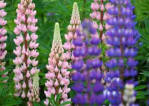 Lupins
Lupins
Cottage garden plant supreme, but that does not preclude
planting in almost any other garden situation. Masses of flower spikes
follow the main central spike (on young plants) whilst the older
plants tend to send up clumps of tall flower spike in assorted
colours. (Perennial or biennial)
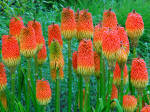 Kniphopfia
Kniphopfia
Red Hot Pokers have to be included though the untidy clump of foliage
that develops with age is not it’s best feature. But, the wide range
of flower colours make up for that! Variable heights with some
varieties barely making 3ft, but others such as K. ‘Prince Igor’ being
the tallest at around 6ft (2m) (Perennial)
Camassia
– Quamash.
Choose the right variety of this bulbous perennial
(Camassia leichtlinii for me) and you will have 4ft tall spires of
creamy white flowers with non-obtrusive basal foliage.
(Bulbous
perennial)
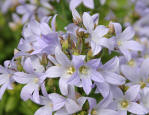 Campanula
– (Bellflowers)
Campanula
– (Bellflowers)
There are several tall versions to chose from in
this upright-growing group of tall flowering plants. For height, I
like the Campanula lactiflora types – of which there are several that
grow up to 5ft, and flower for a long period. Campanula latifolia is
different – get the names right! (Perennial)
Eremurus – Fox Tail or Desert Candle flowers.
The ‘Desert
Candle’ common name stems from the fact that it is best happy in dry
conditions – especially in the winter.
Almost goes without saying, that it adores the sun. Varieties from around 4-6 feet of true flower spikes. (Perennial – often sold as dry-pack roots in autumn.)
 Acanthus
– robust but with showy upright flower clusters.
Acanthus
– robust but with showy upright flower clusters.
Acanthus
spinosus I think the best. Plenty of foliage.
Bicolor flowers
if you include the bracts – white and mauve in total.
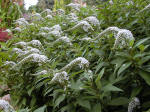 Lysimachia
– Loosestrife
Lysimachia
– Loosestrife
This shares a common name – not unusual but highly
confusing – with the plant listed below. Different families, and
colours, but both well worth considering in differing areas. In this
group, it is quite important to get the names right or you could end
up with a trailing plant – Lysimachia nummularia; a tall but drooping
flowered type Lysimachia clethroides; or the L. ephemerum – white
flowers and height to 3ft; or L. punctata – yellow flowers on spiked
stems, together with its attractive variegated form. (Perennial)
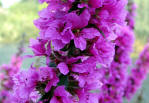 Lythrum
– Loosestrife.
Lythrum
– Loosestrife.
For pink flower spikes, this is a good choice
especially in damp. Saw a magnificent clump of red flower spike on
Purple Loosestrife - Lythrum salicaria ‘Firecandle’ at the edge of
a pond, at near to 4ft tall. L. virgatum rarely gets to more than 3ft,
but is also a superb pink. Clump forming with spikes of deep pink
flowers
Others worth considering – or even including.

Lobelia cardinalis types
Gladiolus - flower spikes - but needing
support mostly
Echium – especially E. candicans ‘Pride of Madeira’
Ligularia – in damp areas
Veratrum – The white Hellebore
Sidalcea – False Mallow.
Annuals or perennials to choose from – Mainly pink shades
Lunaria
- Honesty Plants - height up to 3ft - 60cm.
Linaria –
Toadflax.
Liatris – Blazing Star or Gay Feather Plant. The tallest
one is L. pycnostachia – Kansas feather at up to to 5ft, but the most
popular is the shorter Liatris spicata – neat, tidy but under 3ft.

Penstemon – Everyone’s favourite for tall flower spikes – but for this
list.
The foliage is too intrusive.
It is still one of my favourite
perennials.
Agastache – well worth growing if you are not after too
much height.
Eucomis – Spikes but not height!
Sisyrinchium –
Good flower spikes but not the height for this list.
Veronica –
Superb but lower growing
Aconitum – Not truly spike flowers – but
well worth including in some projects
Heuchera – Shorter growing
but fills all the requirements
Phygelius – comes with abundant
foliage but also with upright flowers of note – and long flowering
period.
Tiarella For the lower growing projects
Veronica – Good
upright flowers with deep blues – lacks height for this selection
Malva – Mallows are variable – upright to bushy – but good plants for
long display.
Physotegia – Obedient plant - sometimes gets to near
3ft!
Tellima – I like this but could not include because of lack of
height
Hyssop – clusters of upright flowers
Phlox – Upright
flowering garden perennial, with bright flowers. Whites through to
deep pink.

Anchusa – erect flowers of vibrant blues. Not really
spikes though!
Cimicifuga – stunning upright flowers with a wealth
of attractive foliage at base.
Crocosmia – Clusters of upright –
but lax – flowers.
Verbena – bonariensis. None more upright insofar as the
stems are concerned, but with a cloud of flowers at the top. Very
usable!
Best Selling Gardening Products
Popular Gardening Sections
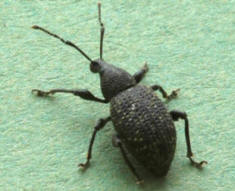
Problems
Identify Weeds in The Garden - How to deal with weeds. Diseases and Pest which harm your garden and plants, learn how to prevent, deter and erradicate your garden problems.
Garden Problems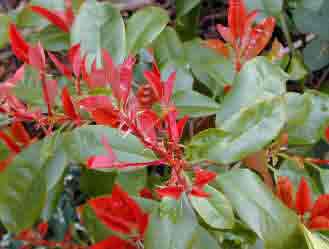
Pruning
Pruning Guide. Shrubs flower better with correct pruning. Many illustrations and examples of what to do - and when. Includes evergreens, roses, flowering shrubs, spring flowering shrubs and pruning for stem effect. This is our most viewed and comprehensive section,
Pruning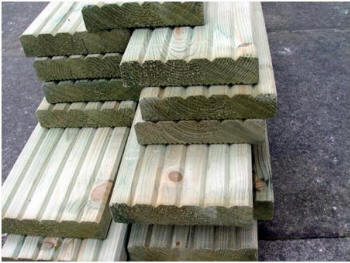
Gardening Businesses
Gardening Businesses listed in the UK counties and USA states. County and State Listings of businesses involved in Garden supplies and services. If you wish to be added to the Directory, please send us your information. Having problems, use the search box
Businesses
Gardening
In this section you will learn about Gardening Basics, Containers, Landscaping, Propagation and Soil.
Gardening
Gardening Gifts
Gardening Gifts and Reviews, Read Before you Buy
- Gardening Gifts Ideas
- Gifts For Her
- Gifts For Men
- Power Tool Gifts
- Cheap Gifts
- Personalised Gifts
- Wildlife Gifts
- Family Gifts


